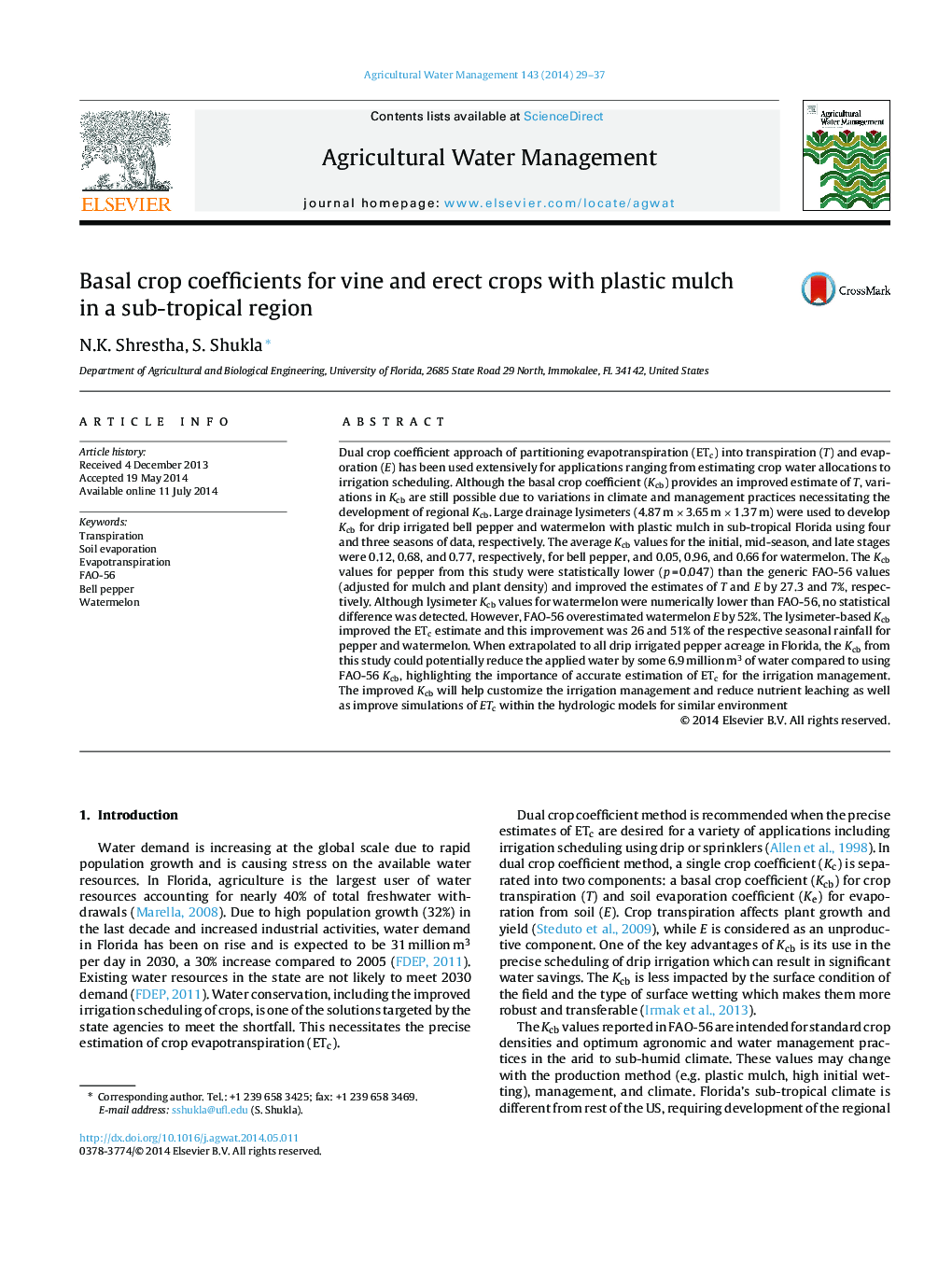| کد مقاله | کد نشریه | سال انتشار | مقاله انگلیسی | نسخه تمام متن |
|---|---|---|---|---|
| 4478627 | 1622936 | 2014 | 9 صفحه PDF | دانلود رایگان |
• Lysimeter-based basal crop coefficients (Kcb−1) for plastic mulched erect and vine crops are estimated.
• Pepper Kcb−1 was lower than FAO-56 which overpredicted transpiration (T) by 27%.
• Use of pepper Kcb−l for irrigation can reduce the applied water by 6.9 million m3 in Florida.
• No statistical difference detected between the lysimeter and FAO-56 Kcb for watermelon.
• More accurate estimates of Kcb will improve water management and allocations, and hydrologic model predictions.
Dual crop coefficient approach of partitioning evapotranspiration (ETc) into transpiration (T) and evaporation (E) has been used extensively for applications ranging from estimating crop water allocations to irrigation scheduling. Although the basal crop coefficient (Kcb) provides an improved estimate of T, variations in Kcb are still possible due to variations in climate and management practices necessitating the development of regional Kcb. Large drainage lysimeters (4.87 m × 3.65 m × 1.37 m) were used to develop Kcb for drip irrigated bell pepper and watermelon with plastic mulch in sub-tropical Florida using four and three seasons of data, respectively. The average Kcb values for the initial, mid-season, and late stages were 0.12, 0.68, and 0.77, respectively, for bell pepper, and 0.05, 0.96, and 0.66 for watermelon. The Kcb values for pepper from this study were statistically lower (p = 0.047) than the generic FAO-56 values (adjusted for mulch and plant density) and improved the estimates of T and E by 27.3 and 7%, respectively. Although lysimeter Kcb values for watermelon were numerically lower than FAO-56, no statistical difference was detected. However, FAO-56 overestimated watermelon E by 52%. The lysimeter-based Kcb improved the ETc estimate and this improvement was 26 and 51% of the respective seasonal rainfall for pepper and watermelon. When extrapolated to all drip irrigated pepper acreage in Florida, the Kcb from this study could potentially reduce the applied water by some 6.9 million m3 of water compared to using FAO-56 Kcb, highlighting the importance of accurate estimation of ETc for the irrigation management. The improved Kcb will help customize the irrigation management and reduce nutrient leaching as well as improve simulations of ETc within the hydrologic models for similar environment
Journal: Agricultural Water Management - Volume 143, September 2014, Pages 29–37
